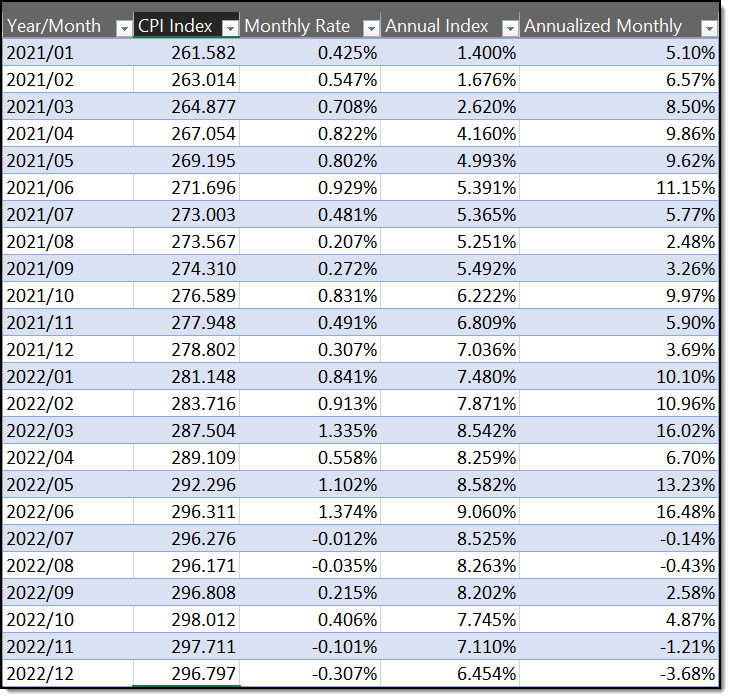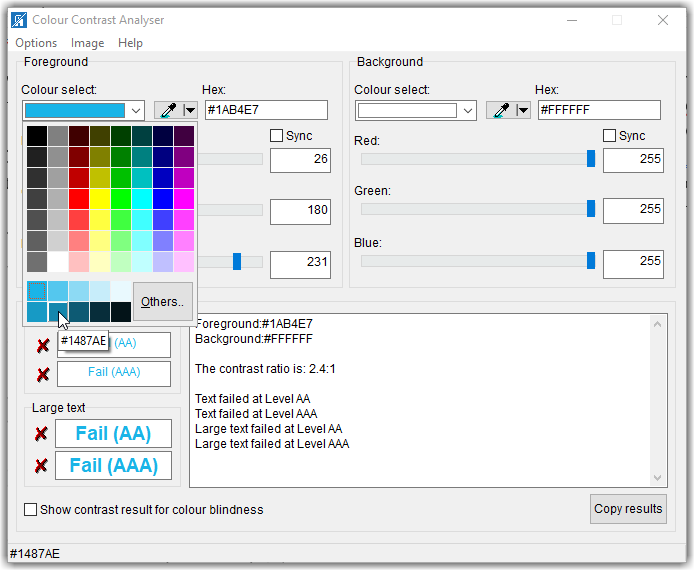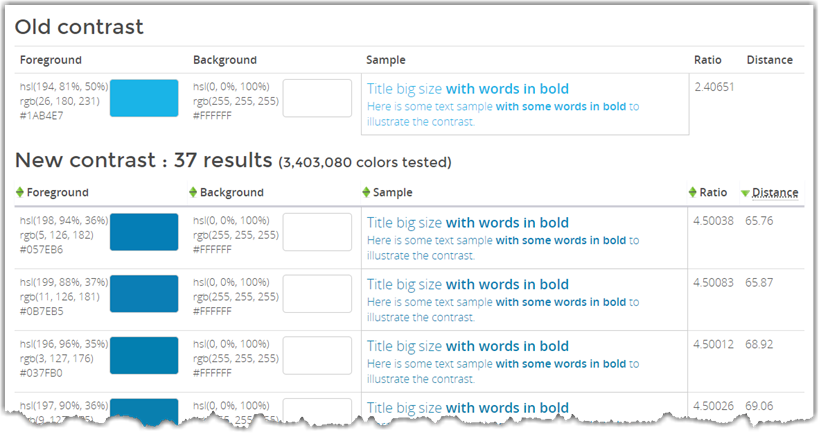Recently I started putting together a presentation about how bias creeps into nearly every analysis of data out there. I maintain that the data itself cannot be biased, but the way that data is interpreted can add a conscious or unconscious bias. I also maintain that any analysis will have at least some degree of bias because the analyst is after all trying to make a point. However, it seems like the levels of bias have reached epidemic proportions since the beginning of 2020.
Of course, there has always been extremes in opinion over many issues. Typically, both sides present data to ‘prove’ they are right. That is what started me thinking, ‘Is there any way to remove/minimize bias from opinions and subsequently charts?’ Let’s first take a look at some of the differences of opinion that created some of the famous bias issues in the past.
Growing up in the 60’s, I was taught in school that continents never changed and always looked like they do today. However, I was fascinated by the then radical theory that South America sort of fit into the outline of Africa and that at one time the two were one land. Of course, today it is generally accepted that continents ‘float’ over the surface of the semi-molten mantle of Earth and in fact all of today’s land masses may have at one time been a single continent. Was this viewpoint a bias or just a lack of knowledge? I’m going to go with the latter.
Of course, who could forget the arguments about whether cigarettes caused cancer with each side creating arguments backed by charts to prove their point.
What about the moon landings in 1969 and the early 1970’s. I watched Neil Armstrong and Buzz Aldrin step onto the surface of the moon via a live television link. Yet many today still believe the moon landings were filmed in a Hollywood sound studio along with 2001, A Space Odyssey. Yes, they pointed at the flag ‘waving’ on a moon with no atmosphere and the lack of stars in the dark black sky. While there are perfectly reasonable explanations for these observations, they dismiss them as lies.
Similarly, it did not matter that while the astronauts were going to the moon that they could see that the Earth was a big rotating ball. Many believed, and some still do today, that the Earth is flat and that the images are just special effects.
Then there are those who believe that we are the only life (perhaps intelligent life although I question that some days) in the universe. Well, at one time people believed the sun revolved around the earth and furthermore that the Earth was the center of the Universe. However, astronomy has expanded our concept of the universe’s size and our latest telescopes like Kepler have already identified thousands of potential Earth-like planets circling the closest stars in our neighborhood. Although we have no evidence of life on these planets yet, the conditions appear to be favorable. But the bigger picture (no pun intended) is that the universe contains billions of galaxies each with billions of stars with billions of planets and many may be favorable for life, so why not? My guess is that there are billions of planets that have intelligent life on them, most are likely more intelligent than us.
But even if intelligent life existed somewhere out there in the universe, they say it could never cross the vast distances to reach us. Even the nearest star, Proxima Centauri is 4.24 light years away which is trillions of miles (nearly 25 trillion miles to be exact). It is only a century ago that most people believed that we could never get to the moon, a mere 238,855 miles on average, because it was just too far, and we did not have the technology to get there. Recently, the New Horizons space probe to Pluto made it past the moon after leaving Earth orbit in a little over 8½ hours. Even at that speed, a little over 28,000 mph, it would take nearly 890 million hours or over 97 thousand years to get to Proxima. Clearly, we need a warp drive or multi-dimensional travel.
These are all weighty problems, problems that science has been able to address which brings us to today’s biggest problem. No, not politics, the elections, or how to balance the national budget although those are areas filled with bias. Picking on politics would be like shooting fish in a barrel. No, I’m talking about COVID-19. From almost the beginning, the press has bombarded us with statistics about how bad COVID is and while there is no doubt that it has resulted in many people getting sick and way too many people dying, some still ask whether the numbers were reported fairly. Both sides of the argument have dug in their heels over the past year with sometimes conflicting statements proving their opinion was the correct one. Yes, there is plenty of data, but it all comes down to how the data is interpreted, reported, and presented to the people. Why? Because most people will not dig into the details to determine when statements contain a bias. However recently, I have seen some improvements. Take the following example.
Recently in the Orlando Sentinel newspaper it was reported that the number of deaths caused by COVID has now reached the number of deaths due to the Spanish Flu of 1918-19 in the United States with over 675,000 deaths. The reporter however did recognize that while that is true, the population of the United States is now about 3 times the US population of 1918-19. Unfortunately, he did not take it one step further to emphasize that the deaths from COVID is only a third of the deaths from the Spanish Flu on a per capita basis. Yes, still serious, but at this time the comparison to the Spanish Flu is not a one-to-one comparison. Yet most people will only remember the headline that the number of COVID deaths has reached the number of Spanish Flu deaths. He also went on to state that global deaths from Spanish Flu were about 50 million while global deaths from COVID are only about 4.7 million at the time of this writing (confirmed with data from the CDC – WHO – ECDC). Let’s twist the Rubric Cube a quarter turn. Using the 675,000 U.S. deaths, the United States accounts for 14.67% of the global deaths today while the U.S. only accounted for 1.35% of the deaths globally from the Spanish Flu. That is an amazing statistic. It should lead the thinking person, like you and me, to ask why is the percent of the global deaths in the United States so much higher for COVID than it was for the Spanish Flu?
Sorry, I do not have a definitive answer, but I do have some clues. The Spanish Flu is known to have killed mostly young healthy adults. On the other hand, a large percentage of the COVID deaths come from the elderly defined as the 65+ group and people with underlying conditions. Since the rest of the world also has a growing group of elderly, it cannot be that simple. What else could it be? Could the higher percentage of deaths due to COVID in the United States indicate that Americans are basically less healthy than the rest of the world and thus more likely to get seriously ill from COVID? Or were at least some of the deaths attributed to COVID really the result of other underlying illnesses that were complicated by COVID?
In related news, according to data published on the CDC website and published by the Denver7 24/7 news channel, the number of confirmed flu cases between September 27, 2020 and May 15, 2021 was only 2,124. To put that number into perspective, the CDC reported on their website that 38 million influenza cases, 18 million medical visits, 405,000 hospitalizations, and 22,000 deaths occurred in the 2019-2020 flu season, just one year prior. In fact, digging into the CDC data shows that the number of deaths due to the ‘common’ flu averages between 12,000 and 61,000 Americans each year. Again, while any number can be seen as too high, the point of this comparison is the exceptionally low number for the 2020-2021 flu season. Maybe the regular flu did not spread because people stayed home and wore masks in public.
Another interesting fact is that while the Federal government promotes vaccination in Americans, there is no mandate for vaccinations such as there was for smallpox, polio, measles, mumps, and rubella to name just a few (see the CDC for a complete list). Each state has slightly different rules especially concerning exemptions, but most states require specific vaccinations before a child can begin school. Initially the shots from Pfizer, Moderna, and Johnson & Johnson were approved for emergency use which may have justified not imposing a public health mandate. However, as these drugs received approval, the drive to reach ‘herd’ immunity faltered yet mandatory vaccination was not implemented. Perhaps people were still afraid of a drug that had only recently received full CDC approval. In any case, President Biden apparently has enough faith in the Pfizer drug to pledge one billion doses to other nations. The Earth currently has about 7.7 billion people so two doses per person will not cover everyone. But here is another interesting twist of the Rubic Cube.
The Federal government decided recently to cut the number of Regeneron (a monoclonal antibody treatment to help reduce symptoms in people with early stage COVID infections) doses to the state of Florida. In the same time period, Florida had the 4th highest death total for COVID in the United States since the beginning in March 2020, however, it is also the third largest state in population dropping it to 11th in deaths per 1000 people. Still, it tried to order 72,000 doses per week and needs at least 36,000 doses to supply state clinics, yet the Federal government cut the number of doses to Florida to under 30,000. With a 7-day average of over 8,000 new cases per day (over 56,000 per week) and over 320 deaths per day, 30,000 doses per week do not seem to be enough. Currently, only Texas has more daily cases. Perhaps the demand is so high that doses must be rationed or perhaps it was because Florida as a state voted Republican in 2020. Who knows?
In another question of ‘who is driving the bus’, the Federal government through President Biden has mandated that all employers of 100 or more employees must be vaccinated or get a weekly negative test result. When many of the testing sites take 4-5 days to return a test result one might ask, what is the point? Yes, the Abbott Labs at-home test kit, BinaxNOW, can provide 15-minute results, but they cost a little over $10 per test that you will have to pay out of your pocket. Furthermore, they appear to be in short supply. Anyway, at the same time, there is no requirement for vaccinations of customers and furthermore, you cannot ask a customer if they are vaccinated. In fact, the Department of Health says they will fine businesses and government groups $5,000 per violation for requiring customers to show proof of COVID vaccination. How can you require vaccines for employees but not apply the same standards to customers? Seems like a bias to me or at least some confusion as to who is driving the bus.
One last point as this post has already gotten too long. Some doctors say the solution is vaccination and masks while others like the new Surgeon General for the State of Florida call vaccinations a religion and that people should just lose weight and eat more fruits and vegetables. So, if vaccinations are a religion, does the refusal to get a vaccine shot amount to a religious exemption? Going back to a prior point, is the Surgeon General trying to imply that Florida’s high death rate is because too many citizens are obese, out of shape, and eat too much fast food?
Anyway, this should give you something to think about the next time you hear the media quote numbers or percentages. Use your own common sense. Seek out the actual data. Population data and COVID case and death numbers are easily available online. Remember that the data itself is not bias. However, the way people interpret and report on the data often does insert a bias. Do your own math. It is really that simple. Remember that while bias in the presentation of data sometimes leads to a better understanding of what is going on, that is not always true. You need to educate yourself on the issues and that does not mean following social media, even this one, blindly. Even the biggest lies have some truth in them to make them believable and even honest people can sometimes interpret that unbiased data wrong.
My SQL Saturday presentation at the end of October here in Orlando will examine bias in data charting and how bias can be used to make a point or disguise reality.
 Today, I am going to look at something called anthropomorphism. That big word refers to the fact that we humans often attribute human-like traits, emotions, and reactions to non-human objects, animals, natural phenomena, and potentially even aliens. Now that I have your attention, let us start with some of the more obvious examples.
Today, I am going to look at something called anthropomorphism. That big word refers to the fact that we humans often attribute human-like traits, emotions, and reactions to non-human objects, animals, natural phenomena, and potentially even aliens. Now that I have your attention, let us start with some of the more obvious examples.






